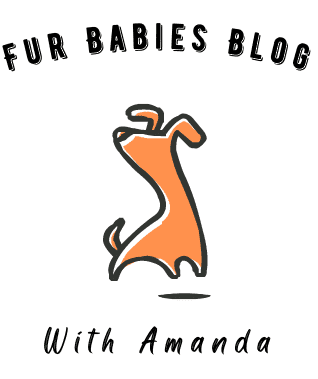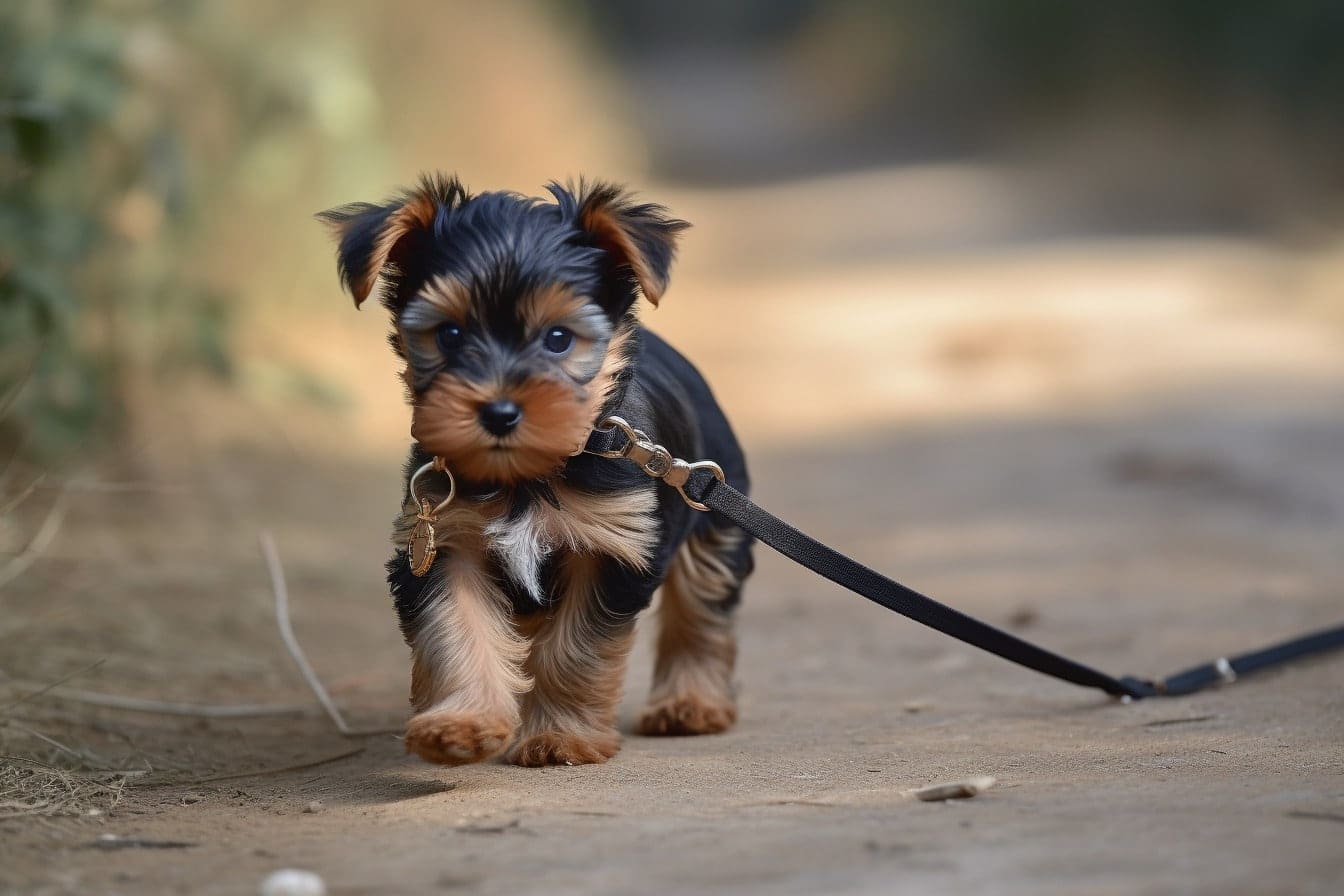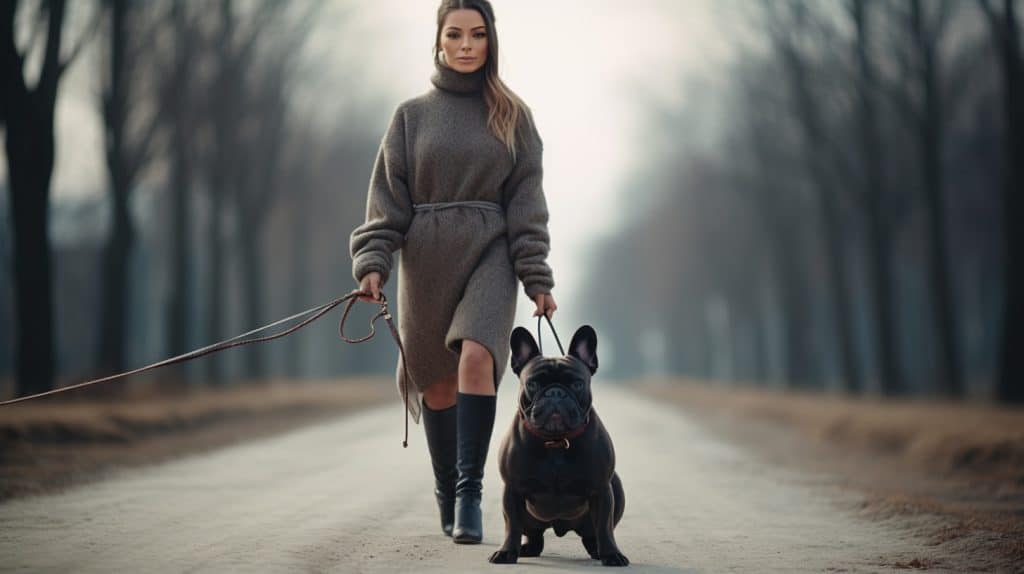Leash Training a Puppy: The Pawsitive Path to Walking Together in Harmony
Some dogs train easy, some dogs don't. French Bulldogs are in a class of their own!
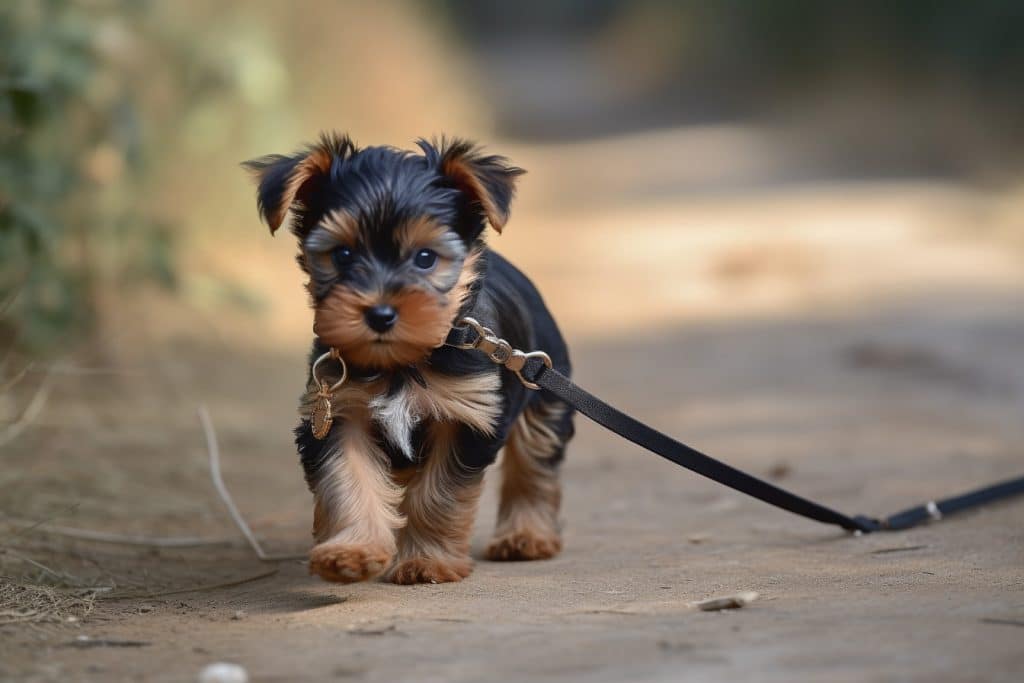
I found leash training Frankie our Frenchie was very hard work. They are perhaps the most stubborn, contrary but absolutely adorable dogs around, and now, well he’s just amazing and well worth every day it took., and there were quite a few….
That's why we've created this guide – providing a comprehensive yet easy-to-follow plan for successful leash training that takes into account not only the scientific principles behind effective canine education but also emphasizes patience and understanding every step of the way.
There's nothing quite like the feeling of strolling side by side with your furry best friend, and we're here to help you make that dream a reality!
Introduction
Leash training a puppy is an essential skill for both you and your pup, as it allows you to safely navigate the world together. When done correctly, leash training a puppy can be an enjoyable and rewarding experience.
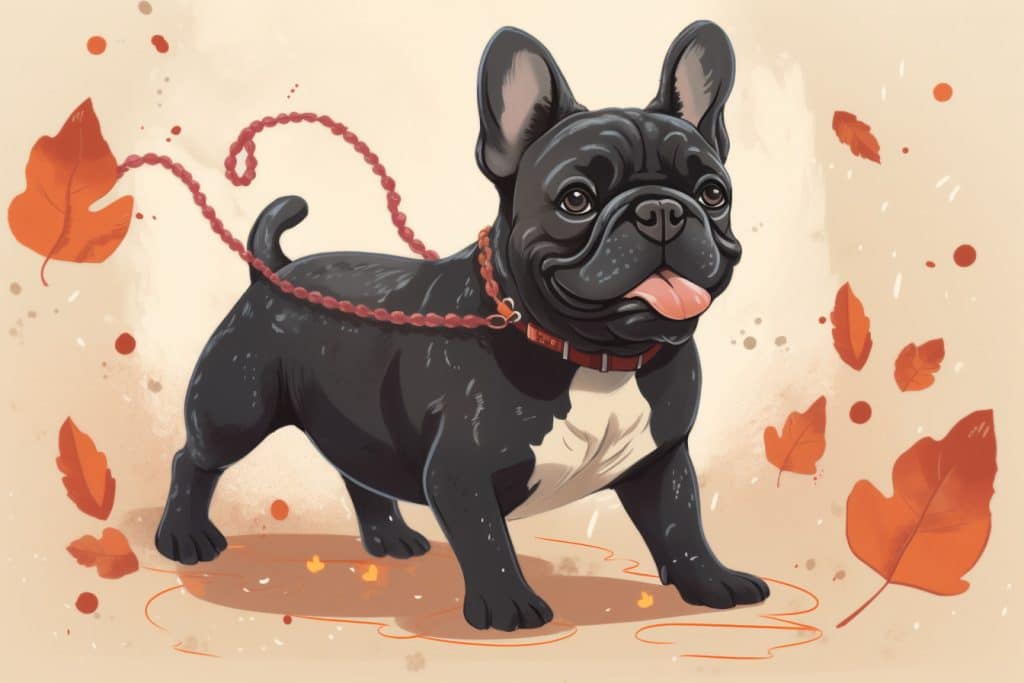
We've crafted this comprehensive guide based on our own experiences so that you can confidently embark on this journey with patience, understanding, and positivity. Our approach focuses on creating a positive environment for your pup while teaching them the basics of loose leash walking.
This means that instead of using force or punishment-based methods, we will encourage good behavior through rewards such as treats, praise, and playtime. By doing so, your puppy will associate walking by your side with positive experiences and reinforcement.
Once you have grasped these concepts and started applying them consistently in practice sessions tailored to serve both yours' and your canine companions needs, the bond between you two will only grow stronger
Picking the Perfect Puppy Leash and Collar
It's essential to consider two crucial factors:
– Finding a comfortable collar with the best fit
– Selecting the right type of leash that leads the way
A well-fitted collar ensures our puppy's comfort and safety while preventing any potential injuries or escape attempts.
Comfortable Collars: Finding the Best Fit
Comfortable collars are essential when leash training a puppy, as they set the foundation for walking together in harmony. Finding the best fit is crucial not only for your dog's comfort but also for their safety and well being.
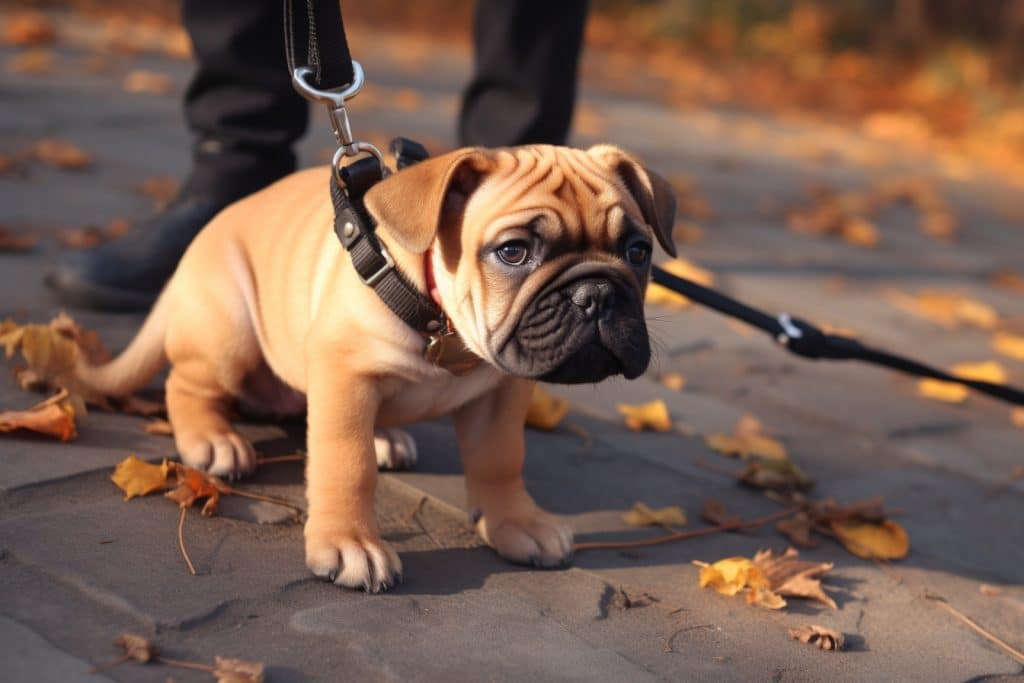
When choosing a collar material, keep durability and ease of cleaning in mind while also considering your puppy's skin sensitivity. Nylon collars are an excellent choice because they're strong yet soft on the skin; however, if your pup has allergies or sensitive skin, consider hypoallergenic options like leather or hemp.
The collar should have a secure quick-release buckle that allows easy removal in case it gets caught on something during playtime or walks. Finally, make sure there is enough space between your dog's neck and collar: You should be able to slide two fingers under it comfortably – any tighter could cause discomfort or difficulty breathing; any looser may allow them to slip out easily during leash training sessions.
Leashes that Lead the Way: Selecting the Right Type
Lengths can vary from short traffic leads to long retractable options; widths also range from slim for smaller breeds to wider for larger pups, so let's consider some factors when choosing a leash that leads the way:
– durability (how well it holds up against wear-and-tear)
– comfort (for both you and your dog)
– ease of use (does it tangle easily?)
– visibility (can other people see you clearly?)
– weight (is it too heavy for your pup?)
– versatility (can it be adjusted for different situations?)
– safety features such as reflective material or built-in lights.
By carefully evaluating these elements in relation to our individual needs and those of our canine companions, we'll be better prepared to select a leash that fosters successful leash training experiences while keeping everyone comfortable and secure during walks.
Laying the Groundwork for Leash Training Success
By incorporating reward-based training methods and ensuring a comfortable atmosphere, we'll help our furry friends associate their leashes with pleasant experiences.
Gradually increasing difficulty levels and consistently practicing patience will not only strengthen the bond between us and our pets but also foster their self-assurance when walking together in harmony.
Creating a Positive Environment
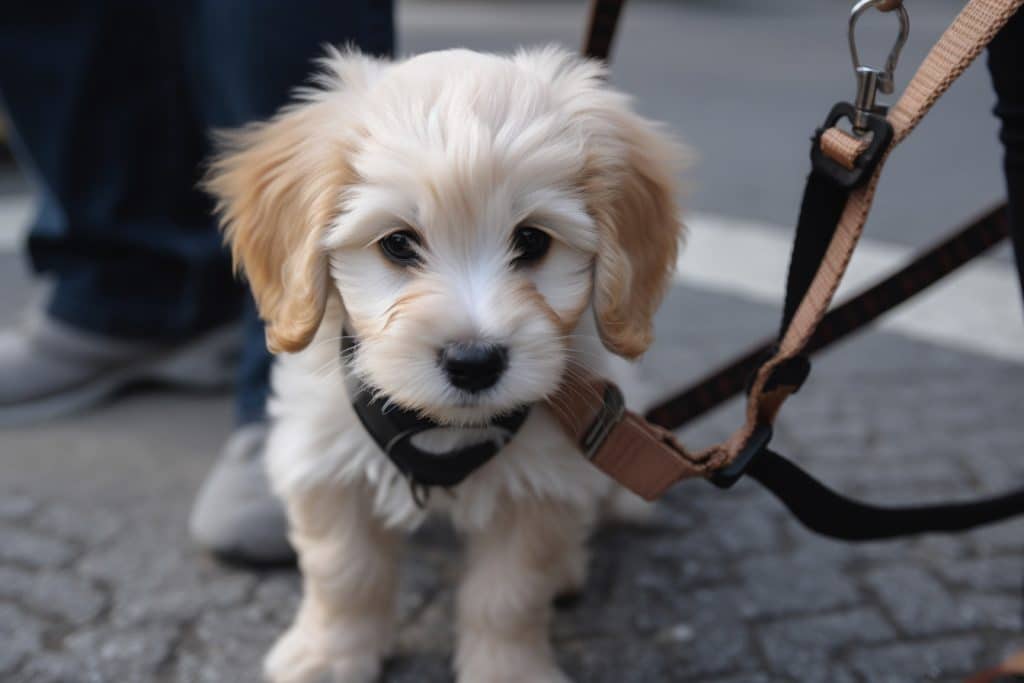
To start off, make sure you choose a quiet area without too many distractions—this will allow both of you to focus solely on the task at hand.
Furthermore, it's important to maintain an upbeat attitude during leash training a puppy sessions; our pets tend to pick up on our energy levels and moods, so keeping things light hearted and fun will help foster enthusiasm for learning new skills.
As you progress with your leash training a puppy sessions, gradually reduce the frequency of rewards until your pup can walk alongside you without needing constant treats. Remember: patience is key.
Establishing Trust and Building Confidence
Establishing trust and building confidence in your puppy during leash training can be achieved by following a few simple steps. These methods, rooted in scientific understanding of canine behavior, will create a positive environment that encourages cooperation from your pup.
1. Consistency: By maintaining consistent rules, expectations, and training techniques during leash training a puppy sessions, you help establish trust between you and your dog. Predictable patterns provide stability for the pup to learn more effectively.
2. Positive reinforcement: Rewarding good behavior with treats or verbal praise is crucial when it comes to establishing trust and building confidence in your puppy. This method reinforces desired actions without instilling fear or uncertainty.
3. Patience: Keep in mind that every dog learns at their own pace; therefore, being patient throughout the process will allow them to develop skills without feeling pressured or overwhelmed.
4. Gradual exposure: Slowly introducing new experiences (like walking on different surfaces) while offering support helps build confidence as well as strengthen the bond between you both.
By following these guidelines, we can help our puppies feel secure as they navigate through various situations on walks together – all while serving their innate desire for companionship and exploration.
Overcoming Common Leash Training Challenges
By addressing these concerns head-on, we can create a harmonious walking partnership that lasts a lifetime. Some common challenges of leash training a puppy include managing pulling and tugging, redirecting distractions, and excitement.
Managing Pulling and Tugging
Isn't it just great when our furry friends decide to take us for a walk or refuse to move instead of the other way around (Get a Frenchie… they're brilliant at it!)?
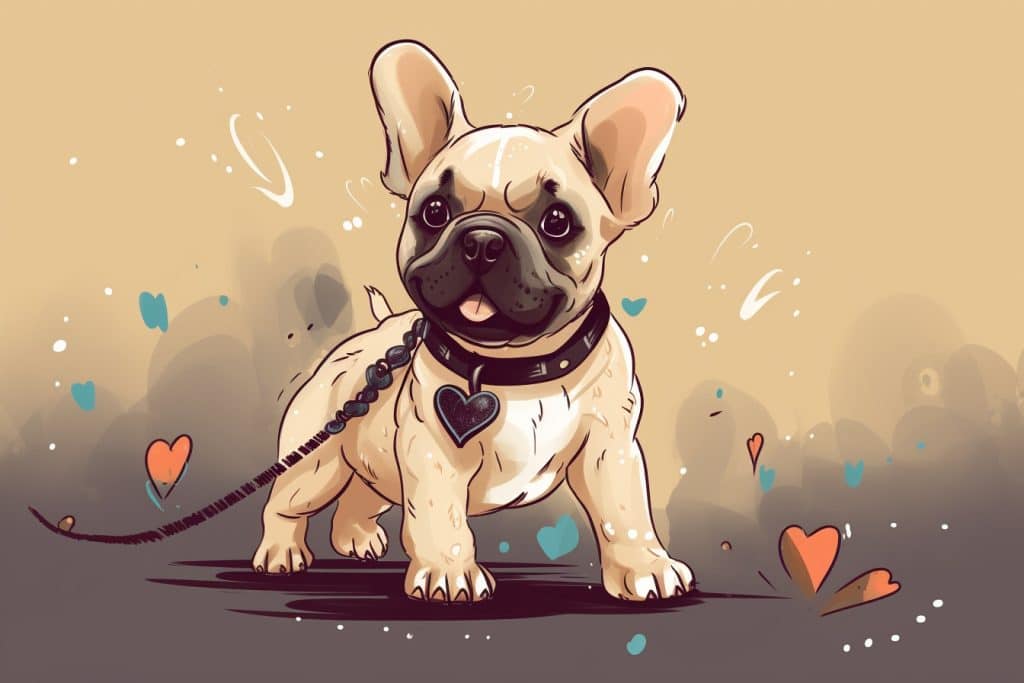
Well, not quite. Managing pulling and tugging is an essential part of leash training a puppy, as it helps create a harmonious walking experience for both you and your pup.
We know it can be frustrating at times but remember that patience is key in this learning process.
To tackle leash tugging effectively, first identify what motivates your puppy to pull – often it's either excitement or an attempt to reach something interesting. Once you understand the cause, you can begin addressing the behavior using positive reinforcement techniques such as rewarding calm behavior or stopping in your tracks until they stop pulling.
It's crucial to remain consistent and patient throughout the training process since consistency is vital for successfully managing pulling behaviors in puppies.
Redirecting Distractions and Excitement
Our goal is to help our puppies become confident walkers who can enjoy their surroundings while still paying attention to us. To achieve this, we must first understand why our dogs get excited or distracted during walks and then apply effective strategies to keep them calm and focused.
1. Identify common distractions (e.g., other dogs, people, squirrels) and anticipate when they might occur on your walk.
2. Use treats or toys as rewards for maintaining focus on you even when faced with distractions.
3. Gradually increase the difficulty by exposing your dog to more challenging situations (e.g., busier environments or closer proximity to other dogs), always rewarding their success at each stage.
4. Practice redirecting your dog's attention back to you using commands such as ‘watch me' or ‘touch,' followed by positive reinforcement.
By following these steps, we will be able to gradually shape our pup's behavior, so they remain calm despite potential distractions during their walks. Not only will this make walking together more enjoyable for both owner and pet, but it also fosters a deep sense of trust between us – which is essential for any lasting bond with our canine companions.
Consistency and Patience: The Key Ingredients to Leash Training
Establishing a regular schedule will help our pups understand what is expected of them, while positive reinforcement in the form of praise or treats can encourage good behavior and make the learning process enjoyable for both parties.
Furthermore, by maintaining patience and understanding when challenges arise, we can adapt our approach to better suit our individual dog's needs – ultimately fostering a harmonious walking partnership built on trust and cooperation.
Developing a Training Routine
You'll be amazed to know that establishing a consistent routine can increase your pup's success rate by up to 70%, making it essential for achieving a harmonious walk side by side.
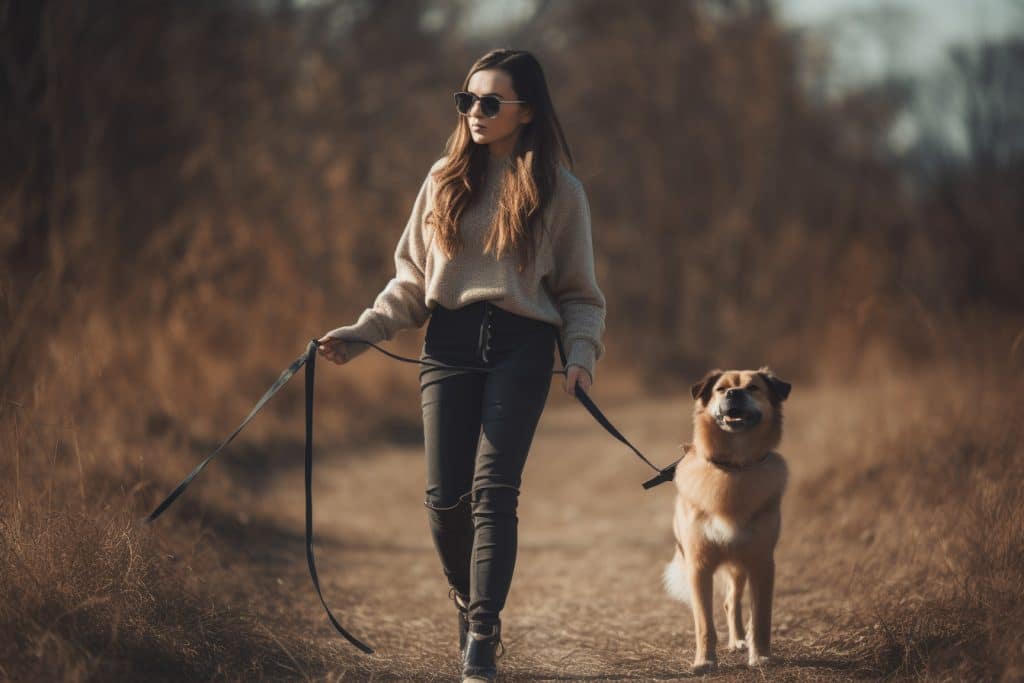
Developing a training routine for leash training a puppy involves setting aside specific times during the day or week and dedicating those moments solely to walking together with your furry friend. By committing to this schedule, we're not only teaching our puppies what to expect but also reinforcing the positive behavior associated with being on a leash.
It's important to remember that consistency is key; deviating from the established routine could potentially confuse our pups and hinder progress.
When developing a training routine, it's important that we cater it specifically to our puppy's needs and abilities. As each dog is unique, so too should their training plan be tailored accordingly.
Start by assessing how well your puppy responds to basic commands, such as ‘sit' or ‘stay,' before incorporating these into the walking sessions. Additionally, consider factors such as age, breed temperament, and energy levels when planning out the frequency and duration of walks – younger puppies may require shorter but more frequent walks compared to older ones with greater endurance.
Ultimately, patience and understanding will play crucial roles in determining the best approach towards creating an effective training routine that fosters walking together in harmony.
Celebrating Progress and Learning from Setbacks
Embracing your pup's achievements and overcoming obstacles along the way is essential for maintaining motivation and continued growth in your journey towards mastering leash skills.
As with any learning process, progress may be gradual, and setbacks are inevitable; however, it's crucial to celebrate every milestone and learn from these experiences.

Keep in mind that each puppy responds differently to training techniques, so patience and consistency will help you understand what works best for your furry companion. Moreover, staying positive during the leash training a puppy process can help you build a strong bond with them while fostering an environment of trust.
Throughout this journey, remember that setbacks provide valuable opportunities to reassess our approach and make necessary adjustments.
For instance, if you find that your pup consistently pulls on the leash despite practicing loose-leash walking exercises, try incorporating positive reinforcement techniques or modifying your routine to better suit their needs.
By viewing challenges as learning experiences rather than failures, we empower ourselves to grow alongside our puppies while enhancing our ability to serve others through responsible pet ownership.
Thoughts
Mastering this essential skill not only strengthens the bond between you and your puppy but also paves the way for countless enjoyable adventures side by side. Leash training a puppy is an investment in your relationship that ultimately leads to walking together in harmony, providing a sense of security and reassurance for both you and your canine companion.
By taking a patient, scientific approach to leash training, you demonstrate true care and dedication towards your pup's well-being. Remember that setbacks are natural parts of the learning process; embrace them as opportunities to better understand your dog's needs and grow together.
We hope our hard-earned insights and techniques provide you with an incredible toolbox to help you and your furry friend walk in harmony.
Remember, consistency and patience are the secret ingredients that'll unlock a world of paw-sibilities for both you and your puppy. Keep up the good work, and before long, you'll be the envy of every dog owner at the park!
FAQs
What age should you start leash training a puppy?
You should begin leash training a puppy around 8 to 10 weeks of age once they've adjusted to their new home. This is a prime time for learning and introducing them to leash training techniques early can set the stage for successful walks in the future. Remember, “what age to start leash training a puppy” isn't as important as ensuring you're patient, consistent, and positive in your approach.
What's the best way to train a puppy on a leash?
The best way to train a puppy on a leash is by making the experience positive and rewarding. Begin by letting them get used to the collar and leash in a familiar, low-distraction environment. Then, you can start training your puppy to walk on a leash by taking short walks around your home or garden. Use treats or toys as motivation, rewarding them for staying near you and not pulling. If your puppy is younger, like a 9 week old puppy, keep training sessions short to match their short attention span. Remember, every puppy is unique, so “how long it takes to leash train a puppy” varies.
How do I get my puppy to stop pulling on the leash?
Getting your puppy to stop pulling on the leash can be a common challenge in leash training a puppy. Start by training your puppy to walk on a leash without pulling by stopping whenever they start to pull. Wait until they calm down and the leash slackens before you start walking again. This will teach your puppy that pulling gets them nowhere. Praise and reward them when they walk nicely at your side. Consistency is key in teaching your puppy to walk on a leash without pulling.
How do I get my dog to walk on a leash without pulling?
Similar to a puppy, teaching an older dog to walk on a leash without pulling requires patience and consistency. Stop moving when they pull and only continue when the leash is slack. If your dog is overly excited, you might need to distract them with a toy or treat. Remember, the aim of leash training is to train your dog that they can explore and enjoy their walk, but not at the cost of dragging you along.
Leash training a puppy that bites the leash.
If you're leash training a puppy that bites the leash, redirect their attention with a toy or treat. Teach them the “leave it” or “drop it” command. When they start to bite the leash, give the command and reward them for listening. Over time, your puppy will learn that biting the leash isn't a rewarding behavior.
In all scenarios, remember that leash training a puppy takes time and patience, but the end result is a well-behaved dog that is a joy to take on walks.
